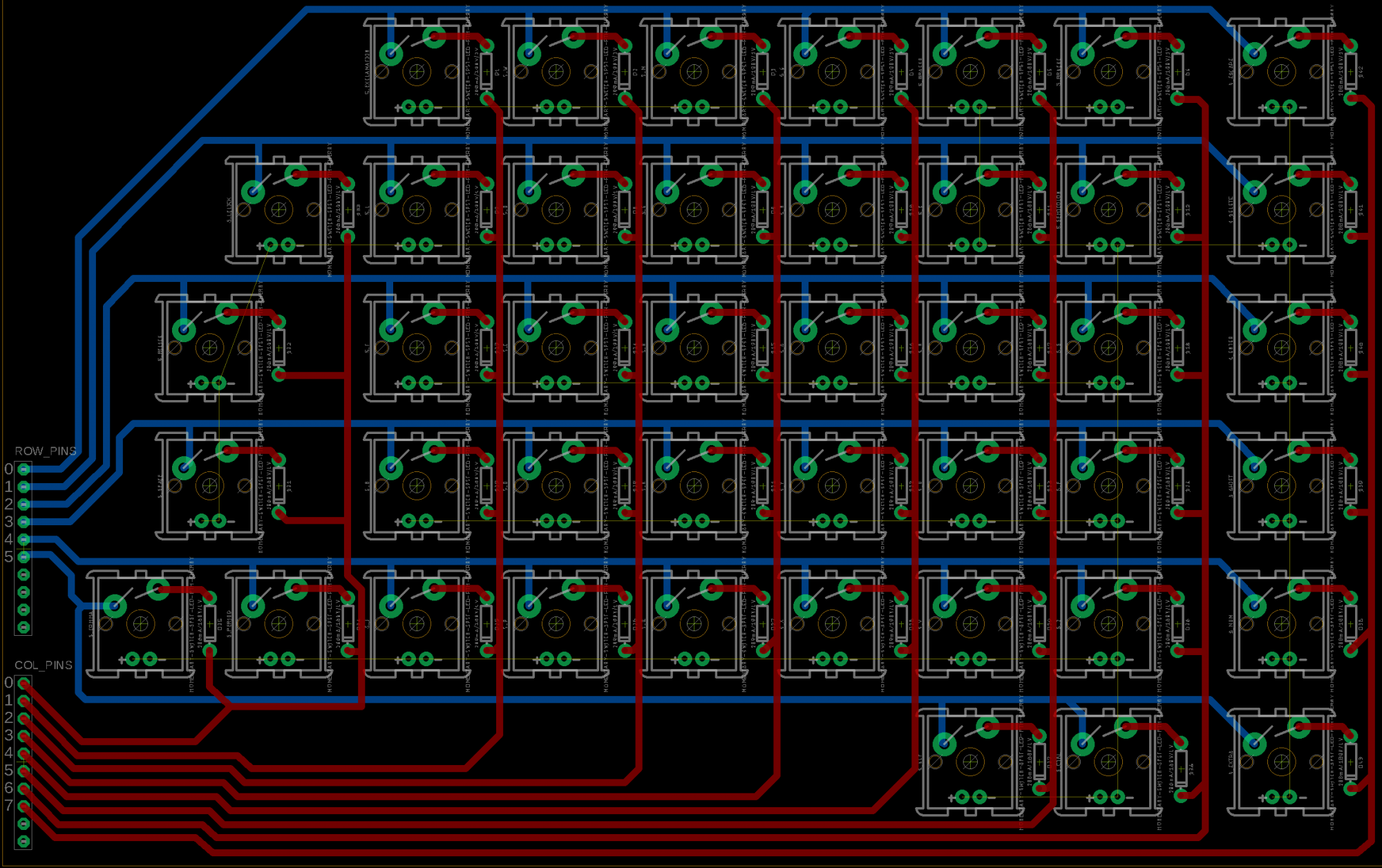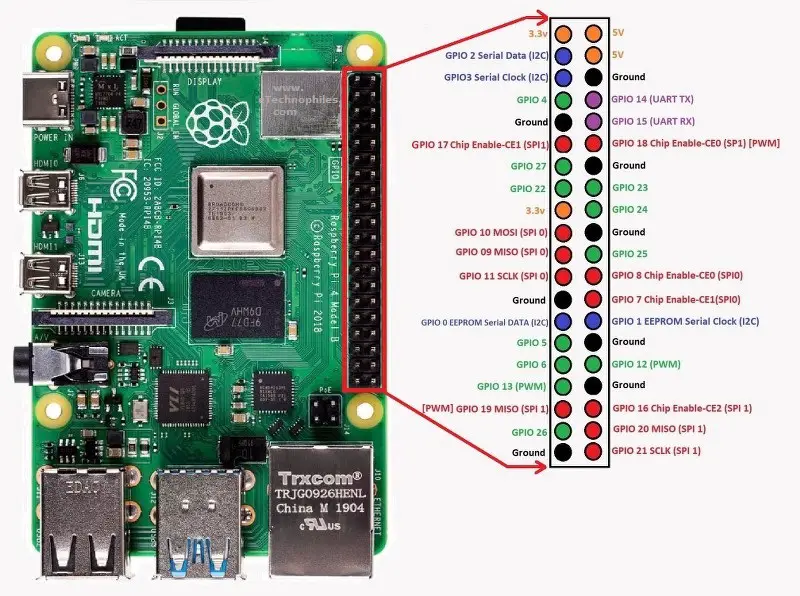- Jorge’s Status Report for 2/12/22
I started by designing some preliminary layouts for our keyboard which is designed for right handed use for now, but can be easily flipped if necessary. I based it off of existing layouts but with a goal to make a much simpler to use and intuitive layout. Besides the design of the keyboard button layout we also looked at the components we will be using. Standard mechanical keyboard switches work well and can be laid out in Eagle relatively easily. We decided on linear key switches because they are the most comfortable to use and Carlos will be designing some custom keycaps for them that will be slightly bigger than standard.
For the board itself we will use a matrix scanning design to get the most use out of our IO pins on the Pi. Currently with only 26 GPIO pins it may be difficult to get 40+ keys to work but that becomes a non-issue when using matrix scanning. With Matrix scanning for every ‘n’ pins we get ((n^2)/4) possible input combinations which means we have more than enough input.

 On the
On the 
